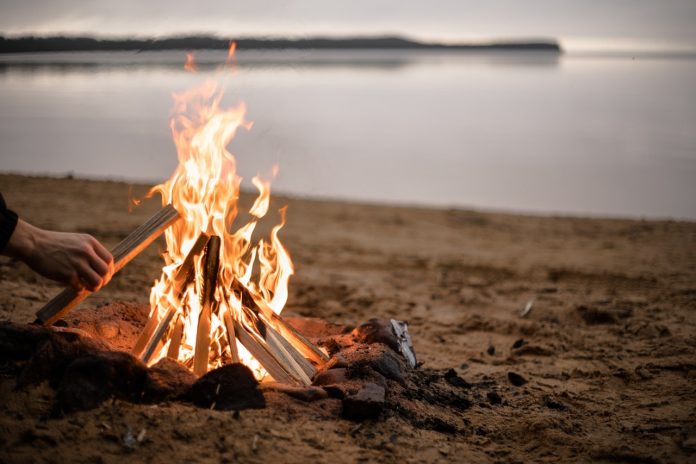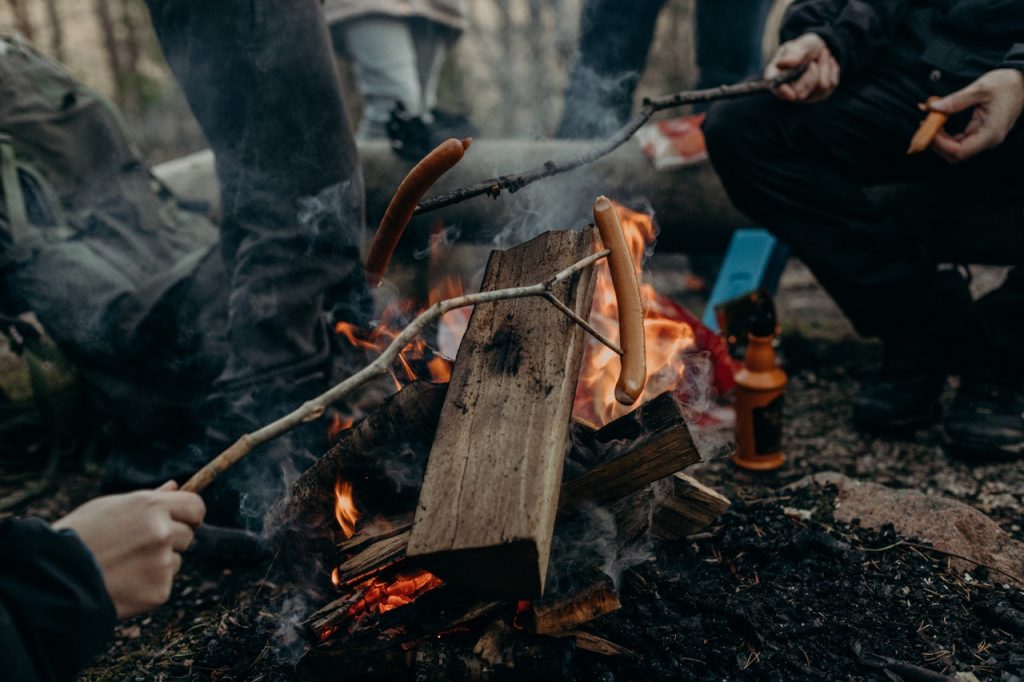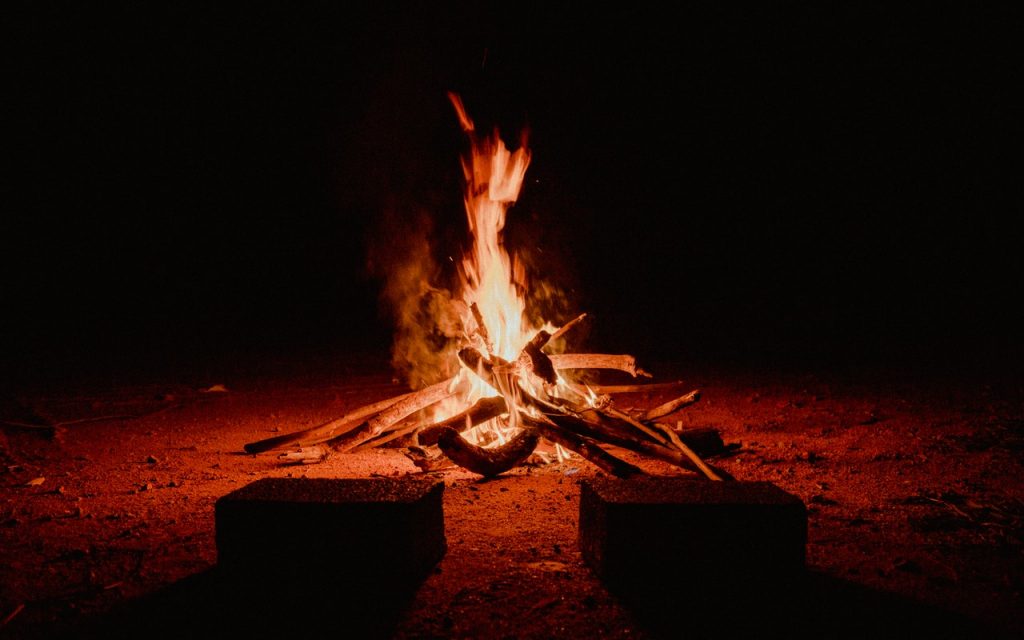
When we go camping, we do so to enjoy the great outdoors and hope that we get a good campsite, with water access, trees for wind and rain protection a place to hang hammocks, and a great fire pit.
However, when we arrive at our campsite and see a campfire pit overflowing with burnt-out logs and piles of hardened ashes, we realize that we are stuck cleaning up after the people who were at our site before us.
Knowing the feeling that this gives you, and the added work just to get things started, we gain a new respect for what we leave behind.
 How to properly clean out a campfire pit starts with making sure that there are no hot coals or embers within the fire pit.
How to properly clean out a campfire pit starts with making sure that there are no hot coals or embers within the fire pit.
Pour a few buckets of water onto the campfire pit, and stir it well with a camping shovel, a thick stick, or a spade. Then, start digging out bucket loads of the remaining debris from the previous campsite tenants.
 Take the buckets of debris, and pour the burnt offerings into strong garbage bags, to be left at the sign-in post for your campsite, or at the entrance office to the campgrounds. The campground personnel will gladly and properly dispose of the burnt debris.
Take the buckets of debris, and pour the burnt offerings into strong garbage bags, to be left at the sign-in post for your campsite, or at the entrance office to the campgrounds. The campground personnel will gladly and properly dispose of the burnt debris.
 One thing to avoid when disposing of the rudely left behind campfire pit debris is to throw it into the water, thinking that it would simply drift away in the current and end up on the bottom of the water source, simply adding to the silt and sand that already exists on the bottom.
One thing to avoid when disposing of the rudely left behind campfire pit debris is to throw it into the water, thinking that it would simply drift away in the current and end up on the bottom of the water source, simply adding to the silt and sand that already exists on the bottom.
This is very much akin to throwing your used car tires onto a gigantic car tire fire in big city’s landfill site, using the mentality that what could a little more hurt.
 When cleaning out a campfire pit, you should also refrain from burying the remnants from the previous campsite tenants, as it has no fertilizing abilities, and is no more than a nuisance to the area.
When cleaning out a campfire pit, you should also refrain from burying the remnants from the previous campsite tenants, as it has no fertilizing abilities, and is no more than a nuisance to the area.
There will still be the aroma of foods that were cooked in the campfires that made the debris that filled your campfire pit. Many foraging animals can smell the grease and other food debris that has dripped into or fallen into the campfire while cooking.
You would not like to sit on a log, have it roll a little, and end up sitting in a pile of stinking ashes from previous cooking fires, so do not make others do the same.
 Camping is 50% properly getting ready and packing what really needs to be brought, and 50% common sense and outdoors knowledge.
Camping is 50% properly getting ready and packing what really needs to be brought, and 50% common sense and outdoors knowledge.
For campfires, and for cleaning campfire pits, you should bring a spade or other camping shovel, a large bucket or two for water and for digging up ashes and used up logs, and strong garbage bags for touting the debris to where it can be properly disposed of.
When you arrive at your campsite, ask the powers that be, either the front office personnel or the forest service personnel as to what you should do with garbage bags full of debris. They will instruct you on the proper methods.
Camp safe. Camp informed.

